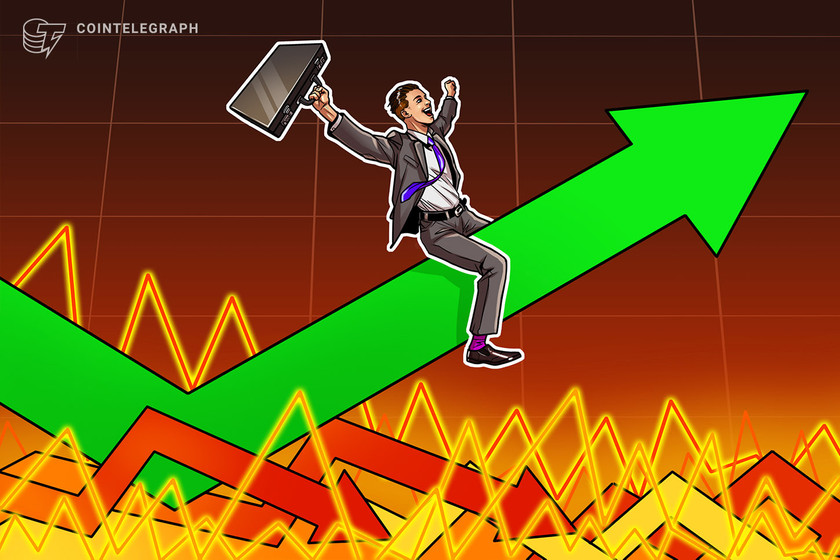Ethereum is going to transform investing


Expect to see tokenized securities proliferate in the years ahead — along with heavy investments in Ethereum staking pools.
Ethereum is often depicted as traditional finance’s adversary in a Manichean struggle for decentralization. In reality, there isn’t any conflict at all. Rather than subverting the traditional financial sector, Ethereum is improving it. Soon, the two systems will be inextricably entwined.
Ethereum’s core value propositions — self-custody, transparency and disintermediation — are enormously relevant to financial institutions, and they can be realized within existing regulatory frameworks. Ethereum has already taken the first steps toward institutional adoption, and with its unmatched network decentralization, it is all but destined to become the primary settlement layer for the world’s financial transactions.
Neutrality in a multipolar world
Ethereum isn’t here to deliver a stateless alternative currency or an anonymized shadow economy. What it offers is simple: neutrality.
Ethereum is the global financial system’s first truly unbiased referee, and its arrival couldn’t be more timely. The geopolitical stability afforded by the United States’ preeminence is eroding, and domestic politics in major economies have become increasingly volatile. In a multipolar world, the financial system urgently needs to maintain reliable rules of the road.
Related: Thanks to Ethereum, ‘altcoin’ is no longer a slur
Ethereum’s system for settling transactions and storing data is practically incorruptible. That is largely because of the unrivaled decentralization of its consensus layer, which spans more than 500,000 validators distributed among more than 10,000 physical nodes in dozens of countries. Despite concerns to the contrary, Ethereum is trending toward greater decentralization over time, not less.
To be sure, Ethereum will never replace traditional contracts or legal authorities for mediating disputes. What it promises, with its inviolable and unbiased code, is to prevent countless disputes from arising in the first place.
Solving the principal-agent problem
From Celsius to FTX and Silvergate, the events that led up to “crypto winter” speak more to the shortcomings of traditional finance than to the failings of crypto. In each instance, the classic principal-agent problem was worsened by lax oversight and overcentralization.
Historically, the default approach to this problem has been regulation. Greater oversight is certainly needed, but Ethereum offers more foundational solutions. Trustless smart contracts and distributed ledgers can remove certain dimensions of the principal-agent problem entirely.
Soon, Ethereum and its scaling chains will permeate traditional banking and asset management. From savings accounts to retirement portfolios, virtually every investor will self-custody their assets in trustless smart contracts, and carefully regulated on-ramps will render the tokenization of fiat currencies virtually frictionless.


Meanwhile, investors and, eventually, regulators will insist that asset managers report fund performance using trustless on-chain oracles. In these areas, Ethereum won’t run afoul of regulations, it will reinforce them. Eventually, authorities will become as attentive to the technical specifications of smart contracts as they are to required liquidity reserves.
The future of Ethereum is not permissionless. Identity-based permissioning will be standard fare, but so seamless as to be practically unnoticeable. With the proliferation of central bank digital currencies, state censorship will be a serious concern. Laws restraining governments from arbitrarily freezing digital assets will gather significant political momentum.
In short, Ethereum has the potential to dramatically reduce private financial malfeasance, but its impact on state censorship will be more limited.
Nascent institutional adoption
Ethereum’s future may still be far off, but its building blocks are already here. Decentralized finance (DeFi) overheated into a speculative conflagration in 2021, but that frenzy of activity spurred considerable innovation. The technology now exists to create a wide array of disintermediated markets and tokenized financial instruments.
What is missing is connectivity with the broader financial system. That is the focus of an emerging class of regulated fiat-to-crypto on-ramps and custodians, such as Circle. The U.S.-based company had laid the foundation for the digital economy with USD Coin (USDC), its tokenized dollar. Circle is now building out additional critical infrastructure, such as hybrid fiat-and-crypto accounts that on-ramp directly to Ethereum and its scaling chains.
Related: Federal regulators are preparing to pass judgment on Ethereum
In the coming years, expect to see a proliferation of tokenized securities, starting with risk-off fixed-income assets. There will also be heavy investment in Ethereum staking pools, which will emerge as a critical strategic asset in the institutional crypto market. Other areas of focus will include on-chain financial reporting, streamlined user flows for regulatory compliance and institutional-grade tokenized derivatives.
To be sure, a recent spate of enforcement actions has cooled development activity in the U.S., but it will remain a major market for the coming wave of regulated protocols.
Tending the infinite garden
The surge in regulatory pressure on crypto, particularly DeFi, marks the end of an era. Large swaths of Ethereum’s ecosystem, especially protocols that can’t or won’t adapt to the changing landscape, will effectively be weeded out. Those that remain, however, will be well adapted to integration with the existing financial system. Ethereum’s transformative impact on traditional finance has only just begun.
This article is for general information purposes and is not intended to be and should not be taken as legal or investment advice. The views, thoughts and opinions expressed here are the author’s alone and do not necessarily reflect or represent the views and opinions of Cointelegraph.




















































